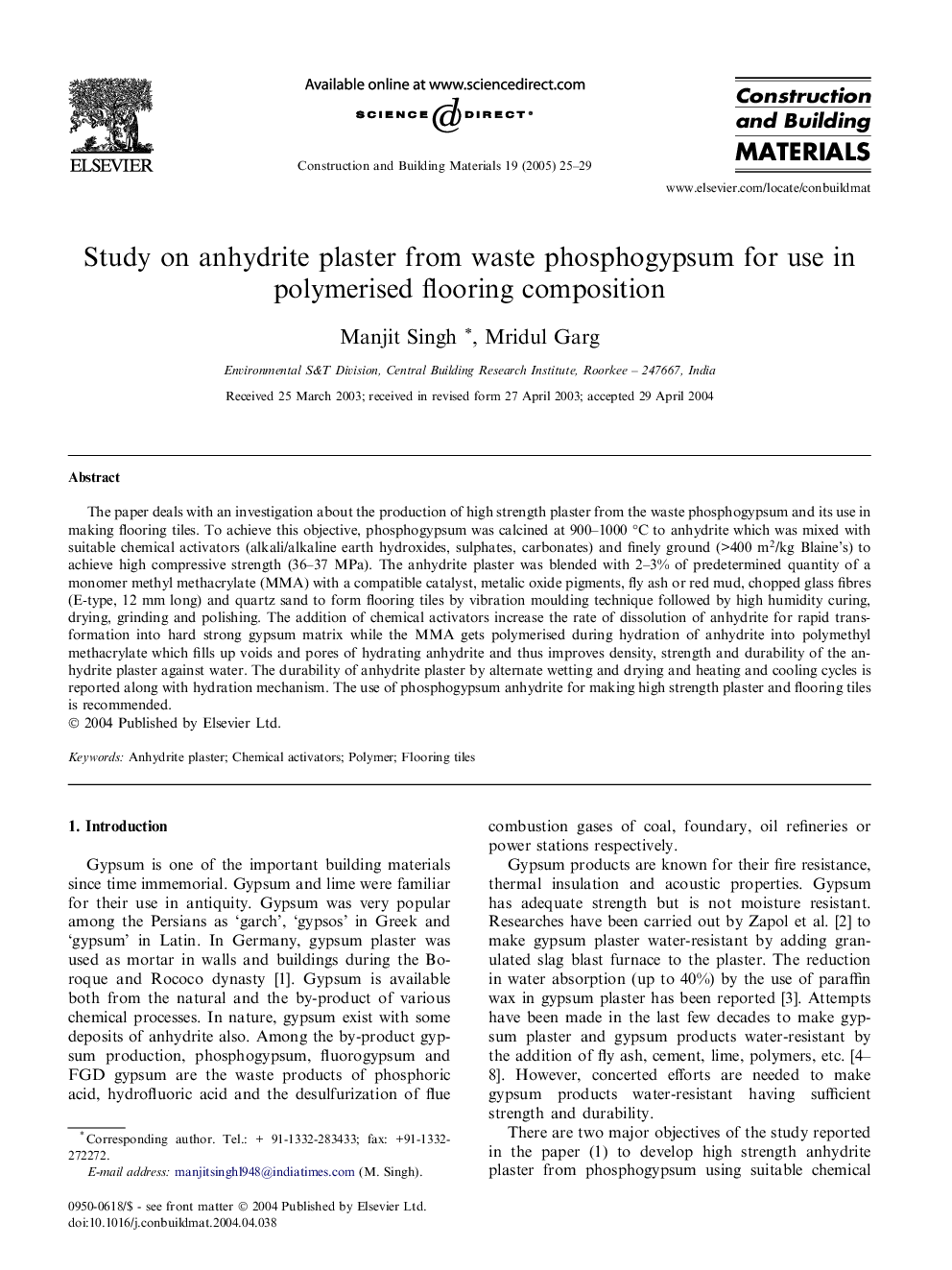| کد مقاله | کد نشریه | سال انتشار | مقاله انگلیسی | نسخه تمام متن |
|---|---|---|---|---|
| 10285594 | 503724 | 2005 | 5 صفحه PDF | دانلود رایگان |
عنوان انگلیسی مقاله ISI
Study on anhydrite plaster from waste phosphogypsum for use in polymerised flooring composition
دانلود مقاله + سفارش ترجمه
دانلود مقاله ISI انگلیسی
رایگان برای ایرانیان
کلمات کلیدی
موضوعات مرتبط
مهندسی و علوم پایه
سایر رشته های مهندسی
مهندسی عمران و سازه
پیش نمایش صفحه اول مقاله

چکیده انگلیسی
The paper deals with an investigation about the production of high strength plaster from the waste phosphogypsum and its use in making flooring tiles. To achieve this objective, phosphogypsum was calcined at 900-1000 °C to anhydrite which was mixed with suitable chemical activators (alkali/alkaline earth hydroxides, sulphates, carbonates) and finely ground (>400 m2/kg Blaine's) to achieve high compressive strength (36-37 MPa). The anhydrite plaster was blended with 2-3% of predetermined quantity of a monomer methyl methacrylate (MMA) with a compatible catalyst, metalic oxide pigments, fly ash or red mud, chopped glass fibres (E-type, 12 mm long) and quartz sand to form flooring tiles by vibration moulding technique followed by high humidity curing, drying, grinding and polishing. The addition of chemical activators increase the rate of dissolution of anhydrite for rapid transformation into hard strong gypsum matrix while the MMA gets polymerised during hydration of anhydrite into polymethyl methacrylate which fills up voids and pores of hydrating anhydrite and thus improves density, strength and durability of the anhydrite plaster against water. The durability of anhydrite plaster by alternate wetting and drying and heating and cooling cycles is reported along with hydration mechanism. The use of phosphogypsum anhydrite for making high strength plaster and flooring tiles is recommended.
ناشر
Database: Elsevier - ScienceDirect (ساینس دایرکت)
Journal: Construction and Building Materials - Volume 19, Issue 1, February 2005, Pages 25-29
Journal: Construction and Building Materials - Volume 19, Issue 1, February 2005, Pages 25-29
نویسندگان
Manjit Singh, Mridul Garg,